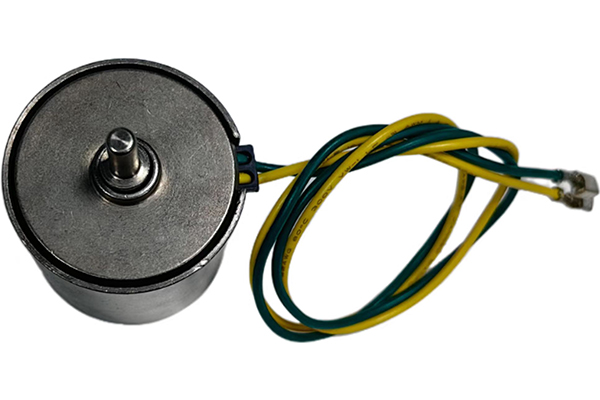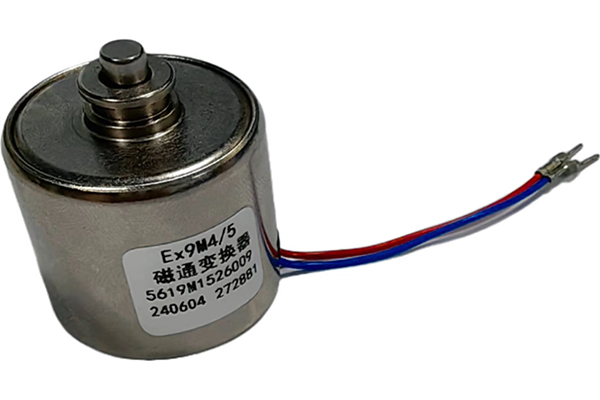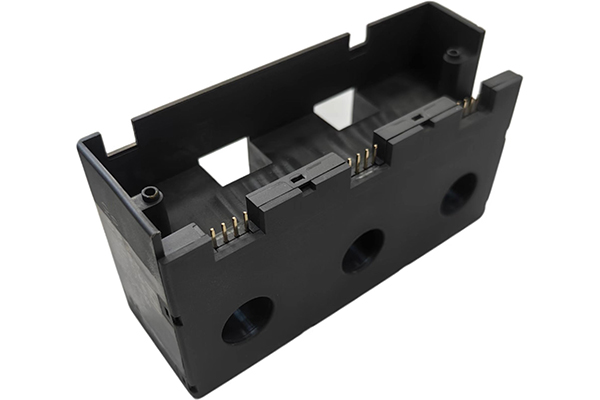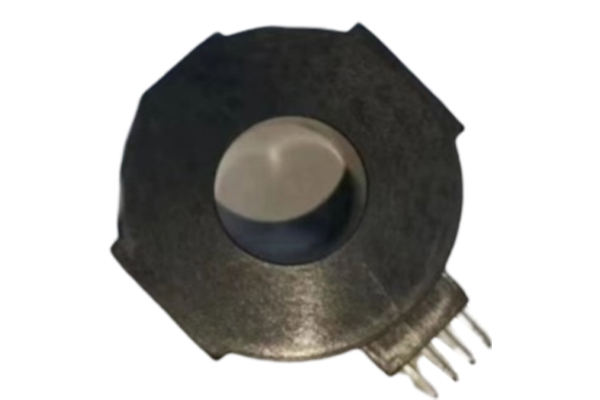What is the role of current transformers in smart grids?
Release Time : 2025-08-04
With growing global energy demand and the pursuit of sustainable development, smart grids are gaining increasing attention as the future direction of power system development. Smart grids integrate advanced sensing, communication, and information technologies to enable intelligent management and optimized operation of power systems. As key measurement and protection devices in power systems, current transformers play an indispensable role in the construction and operation of smart grids.
1. Accurate Current Measurement
The most basic function of a current transformer is to proportionally convert high primary current to low secondary current for use by meters and protective relays. This process not only provides electrical isolation, avoiding the potential hazards of direct connection, but also ensures accurate measurement results. In smart grids, accurate current measurement is crucial for real-time monitoring of grid status. Data provided by current transformers enables grid management systems to accurately understand load conditions, line losses, and equipment operating conditions, enabling more effective resource scheduling and fault diagnosis.
2. Support for Advanced Metering Infrastructure (AMI)
A notable feature of smart grids is the use of Advanced Metering Infrastructure (AMI), which comprises components such as smart meters, communication networks, and data analysis platforms. Current transformers play a crucial role in this process, particularly in current monitoring at the user end. Installed in distribution boxes or smart meters, current transformers can collect real-time user electricity usage information and upload it to data centers for analysis and processing. This not only facilitates time-of-use pricing and demand response, but also helps users better manage their energy consumption.
3. Enhancing Grid Automation
Smart grids emphasize automation and intelligent management, and current transformers are a key component in achieving this goal. Modern current transformers typically integrate sensors, communication modules, and microprocessors, creating so-called smart current transformers (Smart CTs). These intelligent devices not only perform traditional current measurement tasks but also offer self-diagnosis, remote control, and data transmission capabilities. For example, in the event of a fault, smart current transformers can quickly feedback abnormal information to the control system, assisting the automatic reclosing device in quickly restoring power, reducing outages and improving power reliability.
4. Promoting the Integration of Distributed Power Generation
With the development of renewable energy technologies, more and more homes and businesses are installing distributed power sources such as solar panels and wind turbines. However, the integration of large numbers of distributed power sources presents new challenges to traditional power grids, such as voltage fluctuations and frequency deviations. By monitoring the output current of distributed power sources in real time, current transformers can help grid operators adjust operational strategies promptly to ensure stable grid operation. Furthermore, current transformers can be used to monitor the operating status of inverters and prevent potential safety hazards caused by inverter failures.
5. Improving Grid Security
Current transformers also play a crucial role in ensuring grid security. Firstly, by providing accurate current information, they enable relay protection devices to promptly detect and eliminate faults, preventing accidents from escalating. Secondly, the current transformer's inherently excellent insulation properties effectively isolate the electrical connection between the high-voltage power supply and the low-voltage measurement circuit, ensuring the personal safety of operators. The isolation provided by the current transformer is particularly important during maintenance operations.
6. Promoting the Application of Big Data and Artificial Intelligence
Another key feature of smart grids is the use of big data and artificial intelligence technologies for in-depth analysis and prediction. As a data source, current transformers provide a wealth of historical current data. After processing, this data can be used to train machine learning models to predict future load trends and identify potential equipment failure risks. For example, by analyzing current waveforms, early warnings of problems such as transformer overload and cable aging can be provided, enabling preventive maintenance measures to extend equipment life and reduce operational costs.
7. Boosting Microgrid Development
A microgrid is a localized power system consisting of distributed power sources (DGs), energy storage systems, and loads. It can operate independently in island mode or in parallel with the main grid. Current transformers also play a crucial role in microgrids. They not only monitor the output current of each DG, but also track the charge and discharge status of energy storage devices, ensuring energy balance within the microgrid. Furthermore, the real-time data provided by current transformers is crucial for microgrid energy management systems, helping to achieve optimal scheduling and economical operation.
In summary, current transformers play a multifaceted role in smart grids, from basic current measurement to supporting advanced metering infrastructure, enhancing grid automation, facilitating the integration of DGs, improving grid security, promoting the application of big data and artificial intelligence, and facilitating the development of microgrids.
1. Accurate Current Measurement
The most basic function of a current transformer is to proportionally convert high primary current to low secondary current for use by meters and protective relays. This process not only provides electrical isolation, avoiding the potential hazards of direct connection, but also ensures accurate measurement results. In smart grids, accurate current measurement is crucial for real-time monitoring of grid status. Data provided by current transformers enables grid management systems to accurately understand load conditions, line losses, and equipment operating conditions, enabling more effective resource scheduling and fault diagnosis.
2. Support for Advanced Metering Infrastructure (AMI)
A notable feature of smart grids is the use of Advanced Metering Infrastructure (AMI), which comprises components such as smart meters, communication networks, and data analysis platforms. Current transformers play a crucial role in this process, particularly in current monitoring at the user end. Installed in distribution boxes or smart meters, current transformers can collect real-time user electricity usage information and upload it to data centers for analysis and processing. This not only facilitates time-of-use pricing and demand response, but also helps users better manage their energy consumption.
3. Enhancing Grid Automation
Smart grids emphasize automation and intelligent management, and current transformers are a key component in achieving this goal. Modern current transformers typically integrate sensors, communication modules, and microprocessors, creating so-called smart current transformers (Smart CTs). These intelligent devices not only perform traditional current measurement tasks but also offer self-diagnosis, remote control, and data transmission capabilities. For example, in the event of a fault, smart current transformers can quickly feedback abnormal information to the control system, assisting the automatic reclosing device in quickly restoring power, reducing outages and improving power reliability.
4. Promoting the Integration of Distributed Power Generation
With the development of renewable energy technologies, more and more homes and businesses are installing distributed power sources such as solar panels and wind turbines. However, the integration of large numbers of distributed power sources presents new challenges to traditional power grids, such as voltage fluctuations and frequency deviations. By monitoring the output current of distributed power sources in real time, current transformers can help grid operators adjust operational strategies promptly to ensure stable grid operation. Furthermore, current transformers can be used to monitor the operating status of inverters and prevent potential safety hazards caused by inverter failures.
5. Improving Grid Security
Current transformers also play a crucial role in ensuring grid security. Firstly, by providing accurate current information, they enable relay protection devices to promptly detect and eliminate faults, preventing accidents from escalating. Secondly, the current transformer's inherently excellent insulation properties effectively isolate the electrical connection between the high-voltage power supply and the low-voltage measurement circuit, ensuring the personal safety of operators. The isolation provided by the current transformer is particularly important during maintenance operations.
6. Promoting the Application of Big Data and Artificial Intelligence
Another key feature of smart grids is the use of big data and artificial intelligence technologies for in-depth analysis and prediction. As a data source, current transformers provide a wealth of historical current data. After processing, this data can be used to train machine learning models to predict future load trends and identify potential equipment failure risks. For example, by analyzing current waveforms, early warnings of problems such as transformer overload and cable aging can be provided, enabling preventive maintenance measures to extend equipment life and reduce operational costs.
7. Boosting Microgrid Development
A microgrid is a localized power system consisting of distributed power sources (DGs), energy storage systems, and loads. It can operate independently in island mode or in parallel with the main grid. Current transformers also play a crucial role in microgrids. They not only monitor the output current of each DG, but also track the charge and discharge status of energy storage devices, ensuring energy balance within the microgrid. Furthermore, the real-time data provided by current transformers is crucial for microgrid energy management systems, helping to achieve optimal scheduling and economical operation.
In summary, current transformers play a multifaceted role in smart grids, from basic current measurement to supporting advanced metering infrastructure, enhancing grid automation, facilitating the integration of DGs, improving grid security, promoting the application of big data and artificial intelligence, and facilitating the development of microgrids.







